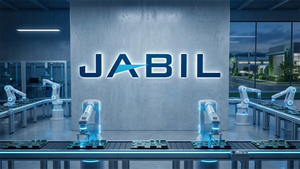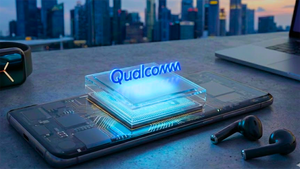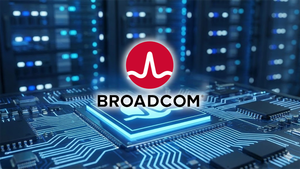Lineage Cell Therapeutics, Inc. (NYSE American and TASE: LCTX), a clinical-stage biotechnology company developing allogeneic cell therapies for unmet medical needs, today provided an update on its auditory neuronal cell therapy program (ANP1), for the treatment of hearing loss, with an initial focus on auditory neuropathy spectrum disorders. Preclinical testing of ANP1 has begun through a collaboration with the University of Michigan and Yehoash Raphael, Ph.D., The R. Jamison and Betty Williams Professor of Otolaryngology, Department of Otolaryngology-Head and Neck Surgery and Lab Director at the University of Michigan Kresge Hearing Research Institute. Dr. Raphael will serve as Principal Investigator and direct initial preclinical testing in collaboration with the company. Hearing loss is a significant unmet medical need, and by 2050, nearly 2.5 billion people are estimated to be impacted by listening impairments across the globe.
“ANP1 is an internally-developed program and which we believe is illustrative of the efficiency and versatility of our technology,” stated Brian Culley, Lineage CEO. “In less than one year, we created new methods of differentiation which successfully advanced a new product candidate from the concept stage to the successful manufacture of a discrete cell type at clinically testable scale. Along the way, we generated new intellectual property and advanced that product candidate into preclinical testing. This new pipeline program was created with less than $1.0 million of investment from our R&D budget and without the use of third party grants or intellectual property. This efficiency comes in part from the extensive experience we gained from our prior development of other cell types. With each new cell type we derive, our in-house expertise grows and we elucidate some of the secrets of differentiation kinetics across various lineages. Moreover, because our pipeline assets are pre-validated, meaning they are specific cell types known to perform defined tasks in the human body, we mitigate certain risks and inefficiencies of working on targets with low clinical relevance. We believe our insights and capabilities provide us with a leading position in the cell transplant space.”
Dr. Raphael added, “Patients with sensorineural hearing loss due to absence of auditory neurons cannot benefit from cochlear implants. Despite extensive efforts using traditional molecular approaches or more recently, gene therapy, there still are no FDA-approved pharmacological options for these patients. ANP1 takes a different approach: it targets the auditory nerve with an allogeneic population of replacement cells to replace the missing auditory neurons. This offers a novel and potentially more clinically measurable effect than narrow and targeted methods. Rather than changing just one gene or one pathway, replacing the entire cell may be more broadly applicable across a large number of patients. There are many questions to answer, and I am excited to be working with Lineage on this bold new initiative for the potential betterment of the hearing in patients with auditory neuropathies.”
Dr. Raphael is an expert in hearing loss research whose interests include inner ear biology, protection and regeneration, gene therapy, genetic deafness and stem cell therapy. Research interests in his lab include repair and regeneration in the inner ear, tissue engineering technologies as applied to the cochlea and vestibular organs, and hereditary deafness. Dr. Raphael is the recipient of numerous awards and honors and has published extensively in the area of hearing loss, with more than 200 publications.
Auditory neuropathy is a challenging hearing disorder in which the inner ear successfully detects sound but has a problem with sending signals from the ear to the brain, currently accounting for approximately 10% of cases of sensorineural hearing loss (SNHL) in children. Current state of the art medical knowledge suggests that auditory neuropathies play a substantial role in hearing impairments and deafness. Hearing depends on a series of complex steps that change sound waves in the air into electrical signals. The auditory nerve then carries these signals to the brain. Auditory neuropathy can be caused by a number of factors including damage to the auditory neurons or loss of these neurons. Researchers are still seeking effective treatments for those affected with auditory neuropathy.
About Lineage Cell Therapeutics, Inc.
Lineage Cell Therapeutics is a clinical-stage biotechnology company developing novel cell therapies for unmet medical needs. Lineage’s programs are based on its robust proprietary cell-based therapy platform and associated in-house development and manufacturing capabilities. With this platform Lineage develops and manufactures specialized, terminally differentiated human cells from its pluripotent and progenitor cell starting materials. These differentiated cells are developed to either replace or support cells that are dysfunctional or absent due to degenerative disease or traumatic injury or administered as a means of helping the body mount an effective immune response to cancer. Lineage’s clinical and preclinical programs are in markets with billion dollar opportunities and include five allogeneic (“off-the-shelf”) product candidates: (i) OpRegen®, a retinal pigment epithelial cell therapy in Phase 2a development for the treatment of geographic atrophy secondary to age-related macular degeneration, is being developed under a worldwide collaboration with Roche and Genentech, a member of the Roche Group; (ii) OPC1, an oligodendrocyte progenitor cell therapy in Phase 1/2a development for the treatment of acute spinal cord injuries; (iii) VAC2, a dendritic cell therapy produced from Lineage’s VAC technology platform for immuno-oncology and infectious disease, currently in Phase 1 clinical development for the treatment of non-small cell lung cancer; (iv) ANP1, an auditory neuronal progenitor cell therapy for the potential treatment of auditory neuropathy; and (v) PNC1, a photoreceptor neural cell therapy for the potential treatment of vision loss due to photoreceptor dysfunction or damage. For more information, please visit www.lineagecell.com or follow the company on Twitter @LineageCell.
Forward-Looking Statements
Lineage cautions you that all statements, other than statements of historical facts, contained in this press release, are forward-looking statements. Forward-looking statements, in some cases, can be identified by terms such as “believe,” “aim,” “may,” “will,” “estimate,” “continue,” “anticipate,” “design,” “intend,” “expect,” “could,” “can,” “plan,” “potential,” “predict,” “seek,” “should,” “would,” “contemplate,” “project,” “target,” “tend to,” or the negative version of these words and similar expressions. Such statements include, but are not limited to, statements relating to: the potential use of ANP1 for the treatment of hearing loss; the broad potential for Lineage’s regenerative medicine platform and Lineage’s ability to advance and expand the same, including Lineage’s ability to manufacture new specific and differentiated cell types on anticipated timelines and budgets; and the potential for Lineage’s investigational allogeneic cell therapies to generate clinical outcomes beyond the reach of traditional methods and provide safe and effective treatment for multiple, diverse serious or life threatening conditions. Forward-looking statements involve known and unknown risks, uncertainties and other factors that may cause Lineage’s actual results, performance or achievements to be materially different from future results, performance or achievements expressed or implied by the forward-looking statements in this press release, including, but not limited to, the following risks: unexpected safety or efficacy data observed during preclinical trials; changes in expected or existing competition; and those risks and uncertainties inherent in Lineage’s business and other risks discussed in Lineage’s filings with the Securities and Exchange Commission (SEC). Lineage’s forward-looking statements are based upon its current expectations and involve assumptions that may never materialize or may prove to be incorrect. All forward-looking statements are expressly qualified in their entirety by these cautionary statements. Further information regarding these and other risks is included under the heading “Risk Factors” in Lineage’s periodic reports with the SEC, including Lineage’s most recent Annual Report on Form 10-K and Quarterly Report on Form 10-Q filed with the SEC and its other reports, which are available from the SEC’s website. You are cautioned not to place undue reliance on forward-looking statements, which speak only as of the date on which they were made. Lineage undertakes no obligation to update such statements to reflect events that occur or circumstances that exist after the date on which they were made, except as required by law.
Disclaimer: Title provided for identification purposes only. The views and opinions expressed are those of the individual only and do not necessarily reflect the positions of the University of Michigan.
View source version on businesswire.com: https://www.businesswire.com/news/home/20230208005248/en/
Contacts
Lineage Cell Therapeutics, Inc. IR
Ioana C. Hone
(ir@lineagecell.com)
(442) 287-8963
LifeSci Advisors
Daniel Ferry
(daniel@lifesciadvisors.com)
(617) 430-7576
Russo Partners – Media Relations
Nic Johnson or David Schull
(Nic.johnson@russopartnersllc.com)
(David.schull@russopartnersllc.com)
(212) 845-4242




